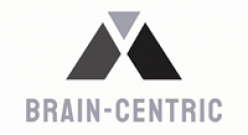Memory versus Understanding.
Memory is like a grocery list, reminding you of what items to buy, while understanding is like knowing how to cook a meal using those ingredients.
Understanding is more beneficial because it allows us to make connections between different pieces of information, solve problems, and adapt to new situations.
When we understand something, it’s like a lightbulb turning on, illuminating a dark room and helping us see the connections between different objects and ideas.
What is the best way for me to understand something?
You don’t forget 80% of what you understand.
Rich Carr
You forget 80% of what you memorize.
The best way to answer that question is to forget HOW YOU LEARNED in school.
You know, the sit-down, shut up, listen to a lecture, ask, “Any questions?” model.
That model, called the Behaviorist Model, is what most people imitate today when they exchange new information with another. It’s the only WAY they know how to do!
Think about it…
Meetings…
Trainings…
Sales Pitches…
Kids…
Lecture, then Test. Apply a label.
The Behaviorist Model is rote memorization. Recall. Search engine stuff.
This three pounds of goop up here called a brain….
It thinks.
If you know how to think, that thinking can bring you anything you think of.
But here’s the rub:
You’ve never been taught to think—only TOLD to think.
And, what to think about. Think about that!
Memory is just you remembering facts like names, dates, and facts.
Understanding is about how these facts relate to each other and how they solve problems or answer questions.
How do you want on your team? A memorizer or a thinker?
Humankind now has the framework of how the brain processes new information and how people love to make it their own.
‘Learning to think’ has become business’ most valuable asset – from learning and development to management – in the face of bots, databases, and artificial intelligence, getting Brain-centric is table stakes today.
The primary difference between memory and understanding is that memory is the ability to store and recall information, like facts or events, while understanding is the ability to make sense of that information and apply it in different situations.
Understand?


